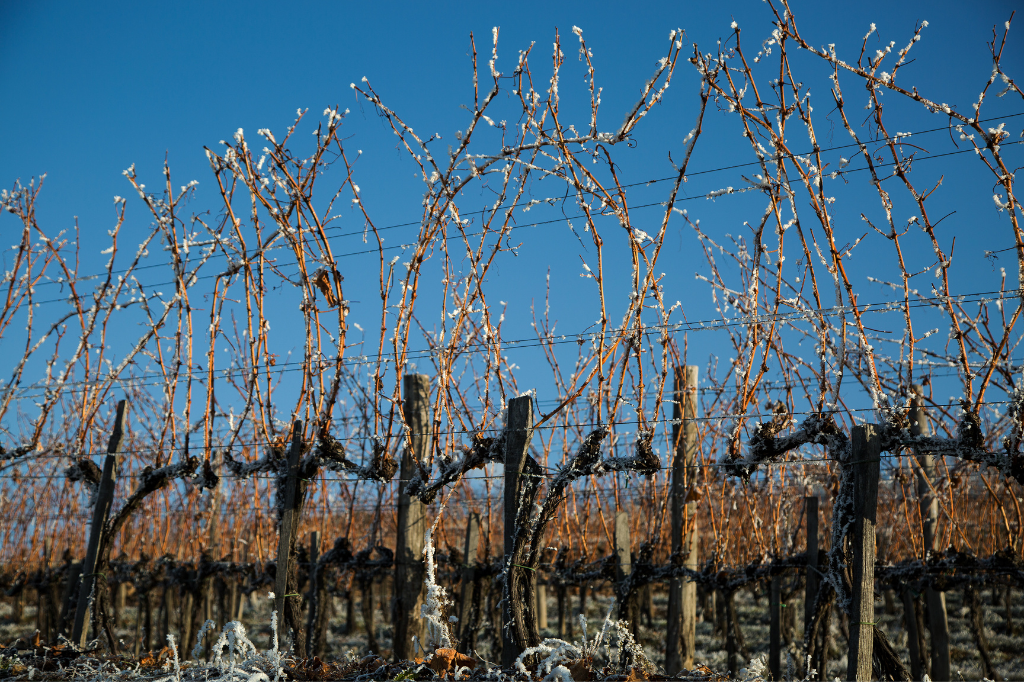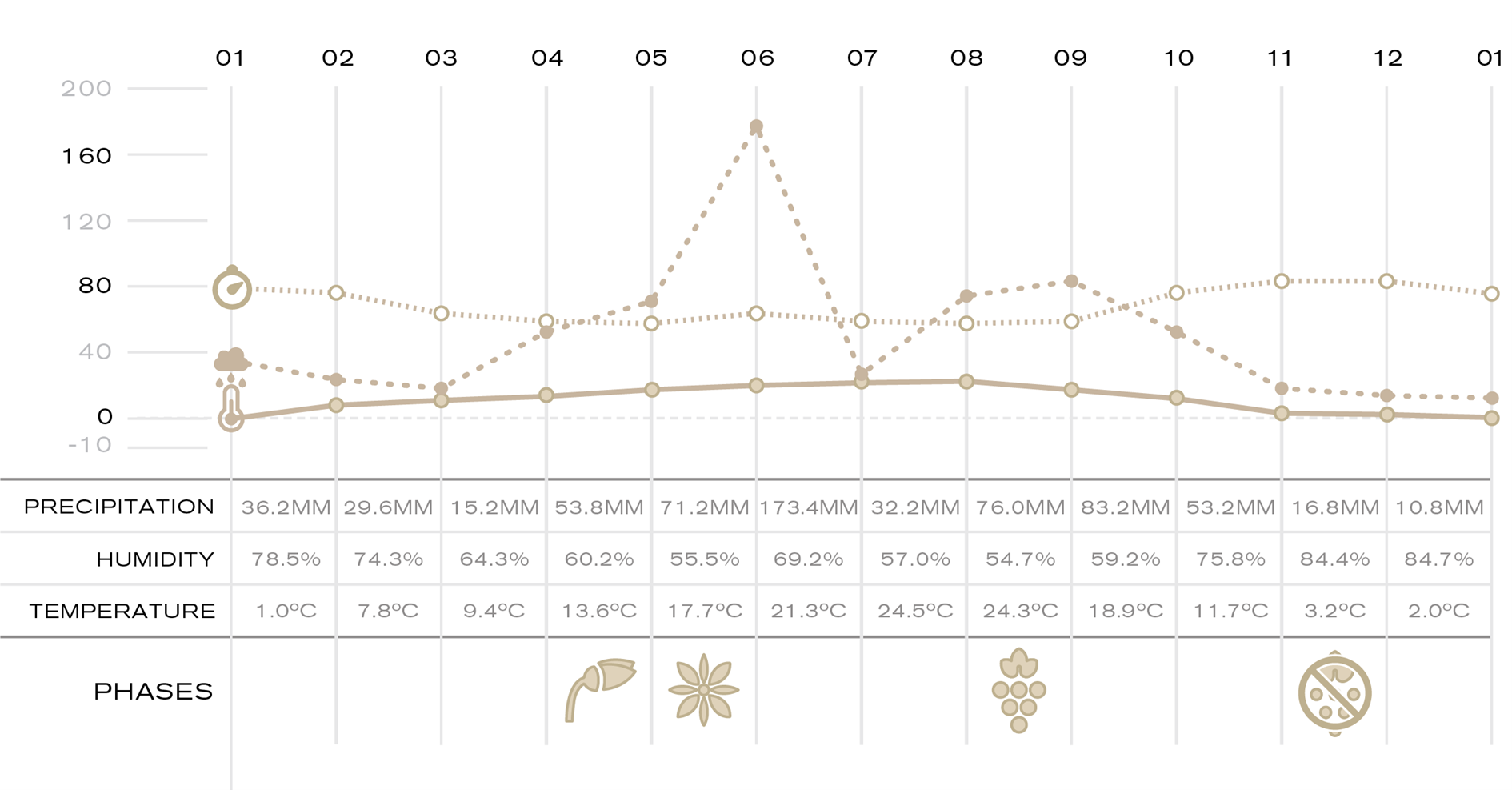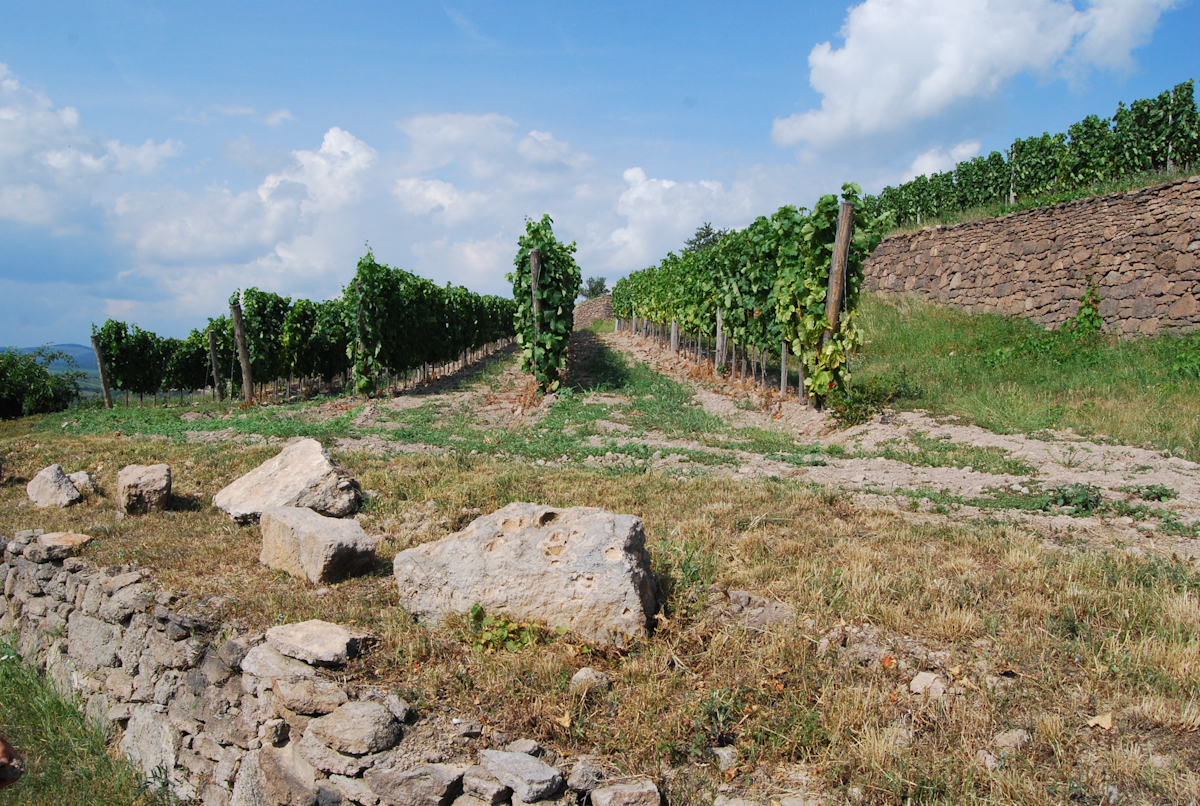Adequate rainfall during the winter and effective prevention measures in the spring and summer helped mitigate the impact of the extremely hot and dry weather in 2024, preventing significant damage to the vines. However, this situation necessitated a complete overhaul of the harvest schedule, leading to a total rescheduling.
UNUSUALLY MILD WEATHER, ACCELERATING VEGETATION
The winter of 2024 brought much milder weather, with temperatures in January and February above the long-term average. For example, the average temperature in January was 2.51°C higher than the normal values for the period between 1990 and 2020. Although there was a more significant cold snap in mid-January, it wasn't intense enough to sufficiently control pests and weeds that proliferated due to the warmer weather. Even though they were dry months, occasional freezing rain and the mild weather led to muddy soil, making access to the vineyards more difficult, which slightly hindered pruning work and maintenance of the land. However, there was one thing we didn't need to worry about: the rainfall in November and December 2023 had sufficiently replenished the soil's water reserves, so we could wait for spring with confidence and peace of mind.
A Tokaji borvidéken március első felében tapasztalt fagyok a Holdvölgy területeit szerencsére elkerülték, a sok évi átlaghoz képest melegebb és szárazabb időjárás pedig egyértelműen segítette a természet újraéledését, felgyorsult a vegetáció. Március végén az egészen nyárias, 25°C környékén alakuló hőmérsékletek markánsan ösztönözték a rügyek kibújását, így a tavalyi évhez képest jóval hamarabb, 2024. április 1-én kifakadtak az első tőkék a melegebb, naposabb fekvésű parcelláinkon.

PERSISTENT HEAT AND HAIL
Due to the continuous rise in temperatures, grapevine flowering took place as usual in May. The summer months were also marked by warmer weather, but this did not cause any water supply issues, as the rainfall at the end of the previous year and the shorter rainy periods experienced in 2024, along with adapted works in the vineyards ensured sufficient water for the soil. In June, for example, more than twice the average amount of rainfall fell on the vineyards in two periods. As a result, the grapevine pruning had to begin a month earlier. The intense growth was also visible on the clusters, as bunch closure occurred much earlier than usual.
In early July, following a particularly hot period, a cooling down was accompanied by hailstorms and strong winds that hit parts of the estate on two occasions. The significant rainfall (equivalent to a month’s quantity of rain in just 7-8 days) drastically increased the likelihood of fungal infections, meaning that the entire summer period was focused on intensive prevention and care to protect the vines and clusters until the harvest.
The harvest began on August 16. In the estate's history, the first stop has always been the Zéta parcel of Dorgó vineyard. However, this year, in an unusual turn of events, the harvest began in the Nyulászó vineyard with the Muscat Blanc harvest. Due to the extreme heat and dryness experienced during the summer, the grapes here ripened earlier. The hot weather made grape picking quite challenging, and by the end of the summer's last month, a level-three heat alert was in place for much of the country.
The early varieties were harvested by the end of August, enriching the 2024 portfolio with the fragrant and pleasant-tasting Zéta, Kabar, and Muscat Blanc grapes. The harvest of Hárslevelű and Furmint took a little longer, with the collection of these varieties only finishing on September 13.
BORIS AGAINST BOTRYTIS
The summer that continued into September was brought to an end by Cyclone Boris, resulting in the third wettest September in the past 33 years. This not only meant that the dry harvest in 2024 ended nearly 4 weeks earlier than the previous year, but it also posed a significant risk to the sweet harvest, as it began to cause dilution in the cracked berries.
Timing and determining the ideal harvest days was also a challenge as the continuous rainfall caused the berries to gradually lose their acidity, the sugar content did not rise quickly enough, and the development of the botrytized grapes was slow to start. Therefore, each trial harvest and lab test became critically important, as only precision allowed us to make the right decisions.
SZOKATLAN SZÜRETKEZDÉS
We began harvesting the late-harvest wines on September 23rd starting with Muscat Blanc from the Nyulászó vineyard. After that, with some short breaks, we were able to steadily continue with the sweet harvest.
Due to the slow development of botrytis, we could only start the aszú berry harvest on October 18th in the Holdvölgy vineyard, which was two weeks later compared to the previous vintage. We could gradually collect the Zéta, Furmint, and Hárslevelű berries of Holdvölgy quality only through careful and experienced hand-picking.

VINTAGE EVALUATION BY OUR WINEMAKER
The continuous maturity and laboratory tests made the process of this vintage significantly more time-consuming. During autumn, the hailstorm conditions forced us to change our strategy to ensure we maintained our quality standards. In most of our blends, we sourced raw materials from completely different vineyards compared to previous years. Where we previously harvested dry grapes, we now procured sweet grapes, and vice versa. This shift did not affect the single-vineyard wines.
Through careful sorting, we managed to bring in beautiful sweet Szamorodni clusters and aszú berries, resulting in a lower must quantity than the dry grapes. The pressed musts were flavorful and rich but fermentation progressed slowly, mainly due to a nutrient deficiency caused by climate change. Despite these challenges, most of our wines will still be produced this year, and we are proud to say that we will have our flagship wine as well, the Culture 6 Puttonyos Tokaji Aszú, which we have produced every year since 2006.
HOLDVÖLGY WINES TO BE RELEASED FROM VINTAGE 2024:
Vision - Tokaji dry estate selection
Expression - Tokaji dry hárslevelű, first-growth Becsek
Intuition No1. - Tokaji sweet Zéta szamorodni
Intuition No2. - Tokaji off-dry Muscat à petits grains
Intuition No4. - Tokaji dry kabar
Exaltation - Tokaji late harvest Muscat à petits grains
Eloquence - Tokaji sweet szamorodni
Culture – 6 puttonyos Tokaji Aszú
Hold and Hollo Uppp - Off-dry sparkling wine
Hold and Hollo Dry - Tokaji dry blend
Hold and Hollo Sweet - Tokaji sweet blend





